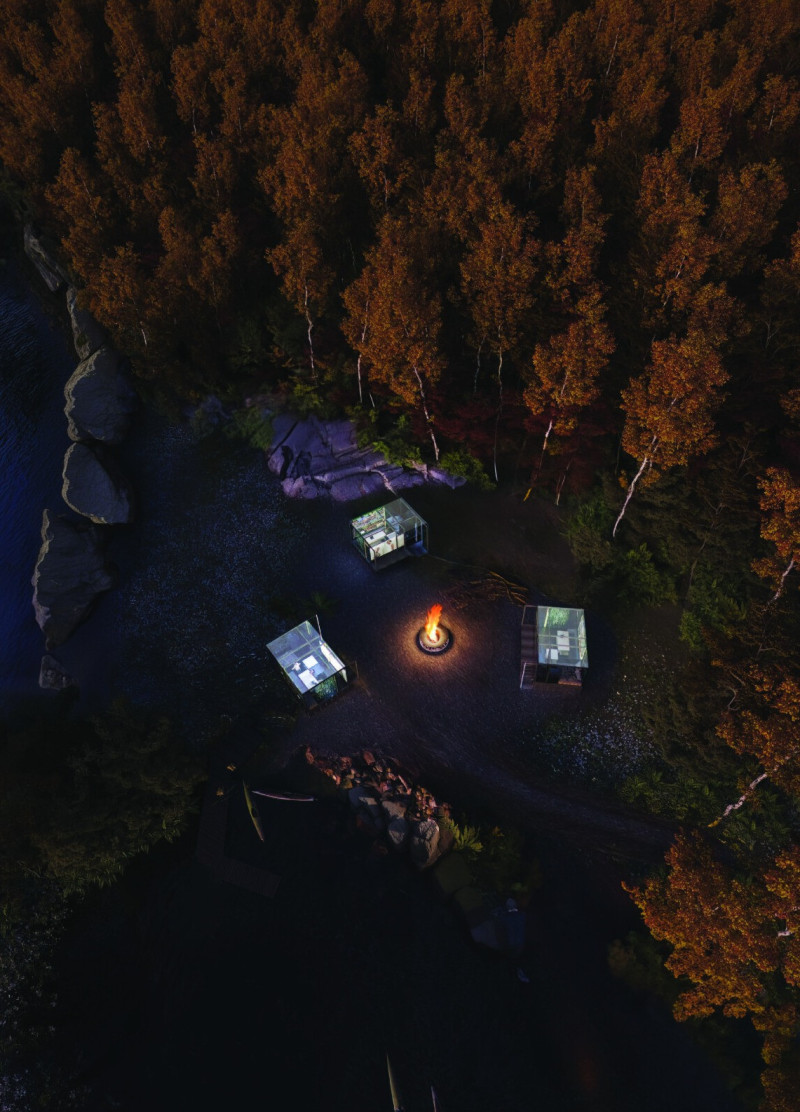5 key facts about this project
At the heart of this project is a multifunctional space that embodies the principles of modern design while addressing practical needs. The building serves various purposes, from community gatherings to educational functions, demonstrating versatility in its architectural approach. By fostering a sense of community, the project functions effectively as a hub for interaction, learning, and cultural exchange.
The architectural design incorporates a harmonious blend of materials, which contribute to both aesthetics and sustainability. The use of concrete provides a robust structural foundation and is complemented by expansive glass elements. These glass facades promote ambient natural light and create a seamless connection between the interior and exterior spaces, allowing occupants to engage with the environment efficiently. Additionally, natural wood elements are introduced into the design, introducing warmth and texture, making the spaces inviting and dynamic.
One notable aspect of the project is its attention to spatial organization. The layout ensures optimal flow and accessibility, thoughtfully guiding visitors through various zones. Each area is defined yet connected, promoting a sense of cohesion. For instance, community rooms are strategically placed near public entrances, facilitating ease of access and encouraging use by residents and visitors alike. The design also considers important circulation paths, ensuring convenient movement within the building.
The architectural design employs a unique approach to sustainability, integrating green technologies that significantly reduce the building's ecological footprint. Features such as landscaped roofs and rainwater management systems exemplify the commitment to environmental stewardship. This connection to nature not only serves functional purposes but also enhances the aesthetic experience of the architecture. The landscape design incorporates native plants, providing biodiversity and further grounding the project in its regional context.
Architecturally, this project transcends mere functionality by embodying local narrative and identity. The integration of cultural motifs through façade designs and interior finishes pays homage to the area's heritage, creating a dialogue between the architecture and its context. This reflects a broader trend in contemporary architecture that seeks to blend modernity with historical significance, ultimately enriching the user experience and fostering a sense of belonging.
Attention to detail is evident throughout the project. From the selection of durable materials to the meticulous crafting of individual spaces, every element serves a purpose while enhancing the overall narrative of the building. The careful consideration of lighting both natural and artificial creates an environment that adapts to the occupants’ needs, fostering productivity and comfort.
In addition to its aesthetic and functional attributes, the project exemplifies innovative architectural ideas that push the boundaries of traditional design. The use of modular construction techniques exemplifies efficiency and sustainability while allowing for flexibility if future modifications are required. This forward-thinking approach reflects a deeper understanding of the evolving role of architecture in society.
This architectural project stands as a testament to the potential of design to impact communities positively. It embodies a comprehensive understanding of how architecture can serve practical functions while enriching the cultural tapestry of its location. For those interested in diving deeper into the architectural plans, architectural sections, and other architectural designs relevant to this project, further exploration of the project presentation will provide valuable insights and a more nuanced understanding of its various architectural elements. Through this exploration, readers will gain a thorough appreciation of the project's outcomes, unique design approaches, and the significant role of thoughtful architecture in enhancing community life.


 Gabriel Tudora,
Gabriel Tudora, 























